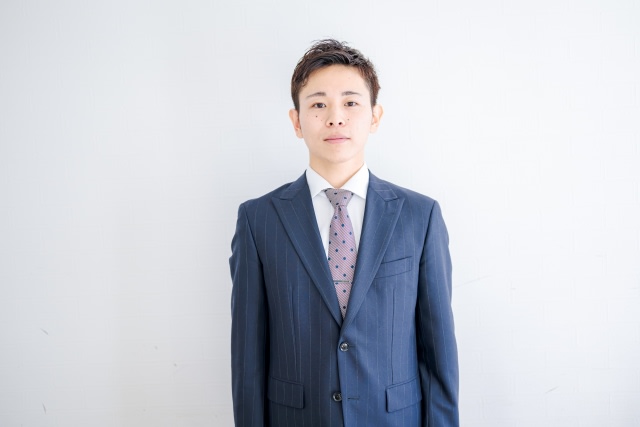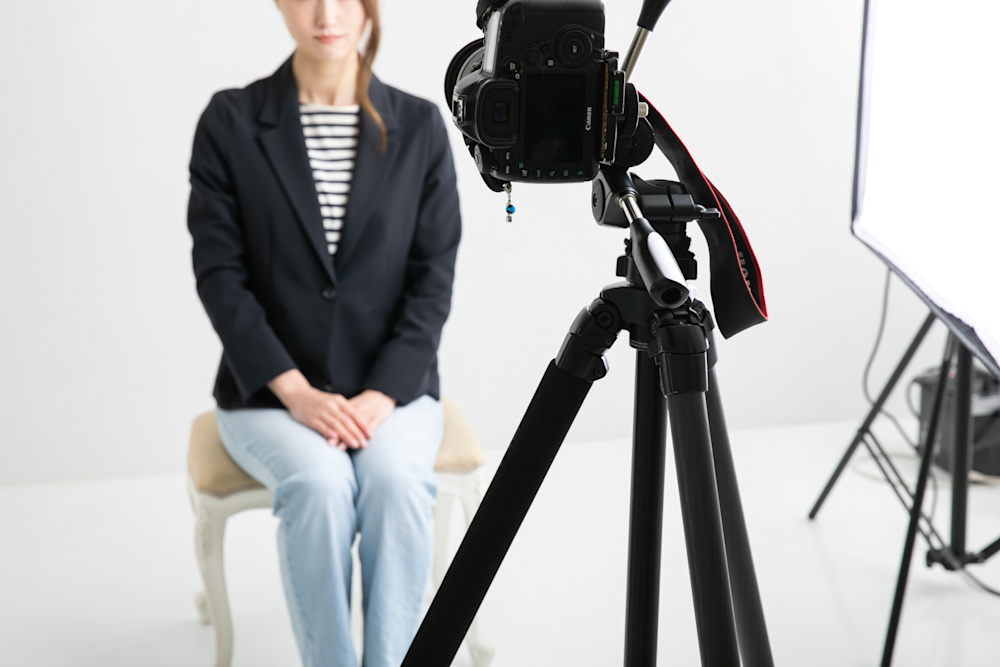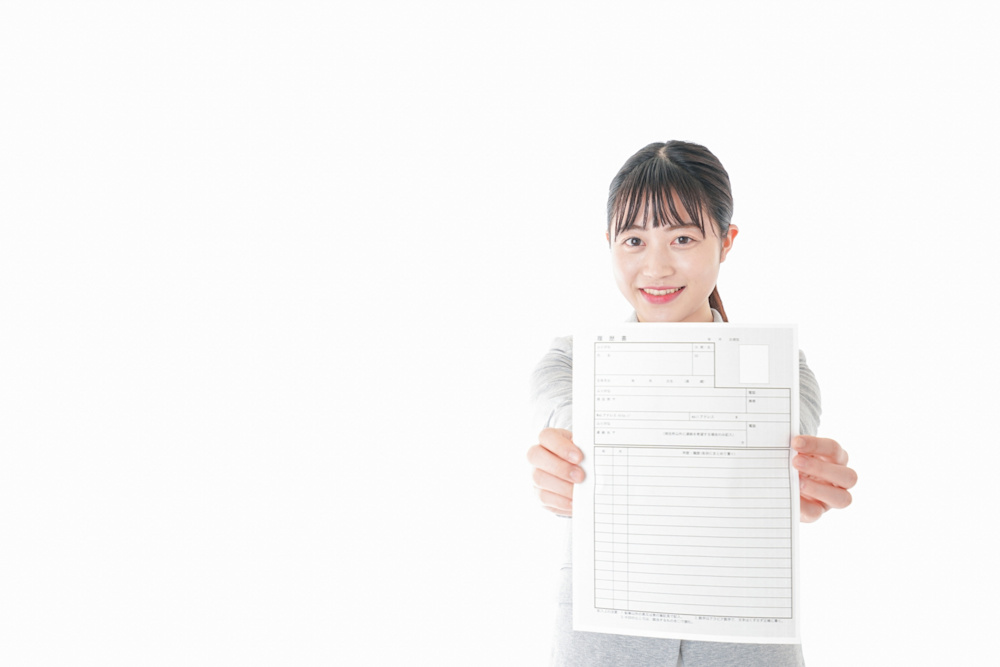Updated March 5, 2025
How to Take the Perfect Japanese Resume Photo
You might find it strange, especially if you’re coming from the US or Europe, but in Japan, including a photo on your resume is a practice that's been around for a long time.
The practice is deeply woven into the country's employment culture and shouldn’t be taken personally—it’s just how things have been done for years.
That being said, one exception here are modern IT companies in Japan, like those advertising jobs on international platforms like Japan Dev, which are moving away from this requirement. Many of these companies are OK with an English resume.
Still, many Japanese companies stick to this custom, especially those in more traditional industries. So, to help you complete your resume, I’ll explain how and where to get a good resume photo and what rules to follow.
With our disclaimer out of the way, let’s explore why these companies usually require a Japanese resume photo.
In this article: 📝
Why a Japanese CV Photo is Necessary
If you’re wondering, “Why do I need a photo on my resume to apply for a job in Japan?”, you’re not alone! The requirement for a resume photo in traditional Japanese companies is all about making a solid first impression and helping the recruiters identify you among the hundreds of other applicants.
Your resume photo isn't just about how you look. It's about showing that you're professional, neat, and ready to represent the company. Most employers simply see the resume photo as a quick way to assess whether a candidate’s appearance matches their company's vibe and values.
The good news is that you are the one who’s in charge of your resume photo and, therefore, how you represent yourself. See this as an opportunity to make an extra impression before you actually get to meet the recruiters.
A polished photo can subtly communicate your attention to detail while still conveying respect for Japanese business culture, both highly valued traits in traditional work environments here.

Standards for The Japan Resume Photo: The Size and Style
As we mentioned, it's essential to meet specific standards for your resume photo when applying to a traditional Japanese company, so let’s break them down one by one.
The Size and Format: Japanese Resume Photo Size
The standard size for resume photos in Japan is 4 centimeters by 3 centimeters. This size fits perfectly into the little photo box on most Japanese resume (rirekisho) templates you’ll find.
If your photo is too big or small, it might come across as sloppy or unprofessional, which isn't exactly the impression you want to make.
Sticking to this size format ensures everything looks clean and polished. Besides, it's one less thing for a potential employer to raise an eyebrow at.
The Clothes: What To Wear in a Japanese Resume Photo
When it comes to what to wear, stick to business formal. Men should wear a dark suit—black or navy works great in this case—with a crisp white shirt and a plain necktie. All buttons on the suit should be closed for that extra polished look.
Of course, a loose tie is a no-go here. Make sure that your tie looks symmetrical and tight, and the collars of your shirt shouldn’t be bent or creased, either.
Women can opt for a dark blazer and a modest blouse that’s not too revealing.
It’s also important to note that new graduates typically wear recruit suits in a black-and-white or navy-white color scheme, but calm tones like gray are also fine. Bright or strong colors should be avoided, as they can be too distracting.
The Makeup: Grooming Tips for Japanese CV Photo
For women, natural and minimal makeup is the way to go. Think of it as enhancing your features without overdoing it. Apply a light foundation to even out your skin tone with a touch of blush for some healthy color, and put on neutral-colored lipstick to finish the look.
Remember that in Japan, wearing makeup is considered part of business etiquette, so skipping it might give off the wrong impression. Just keep it subtle and professional, avoiding anything too bold or flashy.
For men, while makeup is not necessary, making sure your skin is clean and well-groomed is just as important. Covering up any noticeable blemishes can help you look polished and feel more confident as well.
The idea here is to look well-groomed and professional, showing that you’re ready to take on the job and have your life together.
The Hairstyle For a Perfect Japanese CV Photo
Your hair should always look neat and professional in your Japanese resume photo, and this applies to everyone.
For men, short and tidy hairstyles are the go-to, keeping things clean and polished. Women have more freedom in terms of hair length, of course, but they should avoid styles that hide their faces.
This means that if you have long hair, it's a good idea to tie it back or style it so it stays out of the way. This ensures your face is clearly visible and presents a sharp, professional image. Bangs are fine, but make sure they don't cover your eyes.
Tips For Taking a Great Japan Resume Photo
Now that you know the basics of a traditional resume photo, let’s get a little more specific. After all, small details matter a lot in Japan, and paying attention to them will give you the most credit.
Here are some points to consider:
Facial expressions: A neutral yet approachable expression works best. A slight smile is enough to make you appear friendly and confident. The key is balance here—be too serious and you’re suddenly unapproachable, while an overly casual look could well feel unprofessional. A subtle smile without showing teeth often hits the perfect note.
Glasses: If you normally like to rock a glasses-on look, keep them on as long as they don’t create a glare and cover your eyes. Clear, non-reflective lenses are ideal. Your glasses can even add to that professional look we talked about, just don’t force it if you usually wear contact lenses for the photo. Of course, if your usual glasses are a bit too flashy, you may want to opt for contact lenses in this case.
Posture: Sit or stand straight with your shoulders relaxed when you’re posing. Slouching or tilting your head can make you appear less confident, so keep your posture natural but upright. Try to capture that same confident stance you'd have walking into an interview room.
Lighting: Good lighting is crucial to avoid shadows and overexposure. Natural light or soft artificial lighting works best to ensure your features are clearly visible. Avoid harsh lights or overly dark settings. You want your face to stand out.
Background: Stick to a plain, light-colored background. White or pale blue is preferred to keep the focus on you. A busy or distracting background can take away from the professional vibe you’re aiming for, so simplicity is key here.
Where To Get a Japanese Resume Photo Taken?
If you’re wondering where to get a proper resume photo taken, know that you’ve got plenty of options. Whether you're looking for a high-end studio experience or a simple budget-friendly fix, you’ll find that there's something for everyone.
So, let's explore the most popular choices and figure out which one works best for you.
Professional Photo Studios
If you want to ensure the best possible quality, professional photo studios are a great option. These studios offer expert lighting and professional backgrounds as well as tips on how to pose to help you capture the most polished and professional-looking resume photo possible.
Many studios also provide minor photo retouching to ensure you look your best without compromising a natural look. Some studios even specialize in rirekisho photos and offer package deals, which include printed and digital copies for convenience.
At most of these places, the process goes something like this:
Fill out a form at the photo studio
Talk to the photographer about what you need
Get ready (change clothes, apply makeup if you want)
Take the photos
Choose your favorite pictures
Wait for the studio to edit the photos
Get your finished rirekisho photos
Professional photo studios typically charge from 2000 to 5,000 yen, depending on the studio and the services offered. Most of these places will issue a high-quality resume photo for you in about an hour or even less.
Most professional photo studios offer the following services: hair and makeup, retouching of the images, extra copies of images, and sending the images in a disk or digital format.
Considering the all-in-one nature, a professional photo studio can be an especially great option if you're new to the Japanese work culture.

Photo Booths
Photo booths are a budget-friendly and super-convenient option for taking your resume photo. You’ll often spot them near train stations, inside shopping malls, or even outside convenience stores. The cost usually falls between ¥700-¥1000, which is pretty reasonable.
Booths of popular brands like Fujifilm or Ki-Re-i even come with English language options. Even though their websites are in Japanese, you can view them by translating them through your browser.
These boots are designed specifically for Japanese resume photos, so like photo studios, they take care of everything from the correct size to the proper background color and lighting.
While you won’t get the same high-end quality as a professional studio, photo booths are perfect if you’re short on time or working with a tight budget.
Some newer booths even let you do a bit of editing, like tweaking the brightness or copying the photo. Plus, they’re pretty straightforward to use, even if you’re new to the whole process. So, if you need a fast, reliable, and cost-effective option, a photo booth might be your best bet.
If you feel lost, we also have a detailed guide to help you navigate these booths at the end of our post.
Smartphone Apps: Japanese Resume Photo Maker
For those who are tech-savvy, smartphone apps offer a perfectly convenient way to create professional-looking resume photos right from the comfort of your home.
Free Japanese apps, such as Rirekisho Camera and PhotoDirector, can help, but you might need to know some basic Japanese to use them.
If that sounds tricky, English-language options like 7ID Passport Photos are also available, though these will cost you around ¥1500.
These apps make it easy to meet the exact resume photo standards, allowing you to adjust things like size and brightness. If you’re confident in your photography skills, they’re a great DIY choice.
The way these work is simple:
Take your picture through the app
Make adjustments if necessary
Print the photos
If you don’t have a printer, you can also send the photos through the app directly to one of those multi-function copy machines you’ll find at the nearest convenience store (konbini).
These apps can be an affordable, flexible option for those who prefer to take matters into their own hands.
A Simple Guide To Taking a Japanese CV Photo in a Photo Booth
If you decide to take a resume photo in a photo booth near you, let’s explain how to navigate this process.
Before Entering
The first thing you’ll see on the booth before entering is a screen showing the prices and demonstrative images of the different photo options. The selections usually include options to beautify you or retouch your skin to make it look perfect.
The machine will also clearly display the print formats offered, which will also be shown on the screen with examples and prices. Don’t worry, even if you don’t understand something, there will be an image, icon, or photo describing what it all means.
Make Your Selections
The exact process for each machine is different, but once you enter, you first need to select your language if offered. If not, simply select the resume photo option based on the example images.
Then, you’ll be asked if you’d like to pay with cash or via digital payment, which will also have explanatory icons. This step can happen sooner or later in the process, and you may be asked to pay before or after the image is taken. Please note that if you select the cash option, most machines do not accept 2,000 yen bills, 5,000 yen, and 10,000 yen bills. Some machines do not even accept 1,000 yen bills. So, be prepared.
Next, pick your photo type. You might see options like regular photo, retouched photo, or skin enhancement. Each option will show its price.
You also have to confirm whether you want a black-and-white image or a colored one and select the purpose for taking the picture. Select the resume option, or the option with the professional-looking photo when this pops up.
Get Ready For Your Close-Up!
Upon confirming your selections, you’ll be shown a series of directions on the screen before the image is taken.
Essentially, you need to close the curtain, sit upright, and look into the camera. Adjust the seat to your height. Then, look at your face on the screen and place it within the frame shown. Don’t worry about getting it exactly right because you’ll have the option to adjust the image slightly.
Once ready, click the camera icon.
After your photo is taken, you’ll be able to adjust the image using the inputs on the machine. You can use the up and down buttons to fit your face in the frame perfectly. Then, all you need to do is press print! Your image should now be issued.

Closing Thoughts on Japanese Resume Photo
While it may not be universally required, understanding the nuances of a Japanese resume photo can make a significant difference when applying to traditional companies in Japan.
Whether you choose a professional studio, a photo booth, or an app, ensure that your photo meets the standard guidelines to create a strong first impression. By doing so, not only will you demonstrate respect for Japanese business culture, but also increase your chances of landing the job.
Speaking of increasing your chances of landing a job, we also recommend reading our English resume guide for developers.
Get Job Alerts
Sign up for our newsletter to get hand-picked tech jobs in Japan – straight to your inbox.






